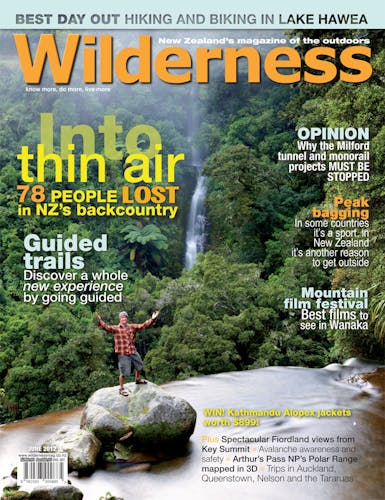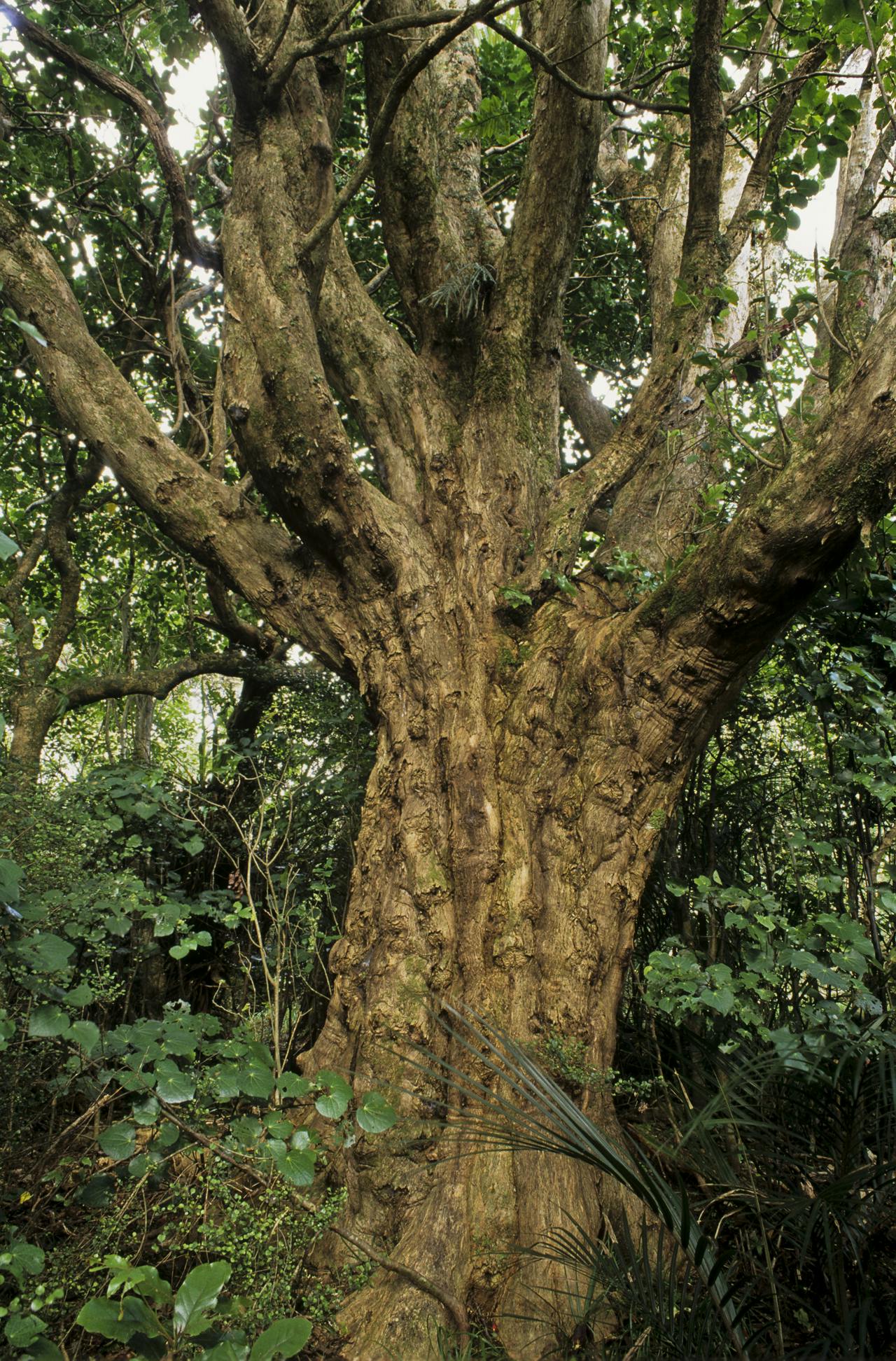Three places to see more of this distinctive native tree
To the uninitiated, the New Zealand bush can seem a confusing array of tangled greenery. The podocarps and beeches are easy enough to distinguish, but what about all the broad-leaved trees and shrubs?
Even the most botanically-challenged should be able to identify and appreciate puriri (Vitex lucens), a distinctive endemic tree with a pale brown trunk and large buttresses, capable of reaching heights of up to 20m. Although restricted to semi-tropical environments ranging from Northland to coastal parts of Taranaki and East Cape, it happily grows outside its natural range in warmer spots: we’ve got one growing right outside our Wellington house.
Puriri’s dark, glossy green leaves grow in groups of three or five, with the largest leaf on the end. The veins are prominent, and give the leaves a distinctive appearance, but it’s usually the light-coloured trunk that gives the tree away. Older trees often have flaky bark, and may host the puriri moth during its caterpillar stage. New Zealand’s largest moth with a wingspan up to 15cm, the caterpillars bore into puriri trunks and often leave a distinctive hole after they’ve metamorphosed into moths.
Perhaps the tree’s crimson flowers form its most distinctive feature. These sprout during the winter months, white stamens protruding, and in spring develop into a fleshy pink-red fruit enjoyed by birds, especially kereru. Often the gorged remains of puriri fruit, dropped by a greedy wood pigeon, alert trampers to the presence of a puriri tree in the canopy above.
Cape Brett Track, Northland
This overnight tramp into Cape Brett Hut passes through a mixed broadleaf forest typical of Northland, including puriri. The whole track takes about eight hours each way, although can be shortened with a water taxi to Deep Cove. Nearby, the shorter track to Whangamumu Harbour provides opportunities to see puriri too.
Fantail Bay, Papa Aroha and Coromandel Walkway, Coromandel Peninsula
Puriri trees grow abundantly on the slopes of Mt Moehau, the Coromandel’s highest peak. On the western side of the Coromandel Peninsula, a short track at Papa Aroha Scenic Reserve (14km north of Coromandel township) weaves through forest where pururi are common. Further north, a track beginning at Fantail Bay climbs towards Mt Moehau, where pururi grow. Likewise the Coromandel Walkway, connecting Stony and Fletcher bays, provides opportunity to walk among puriri.
Otari Wilton Bush, Wellington
This botanical wonderland in the heart of the capital contains specimens of many native trees, including puriri. It offers an opportunity for those in the less tropical south of the North Island to enjoy these fine trees.








